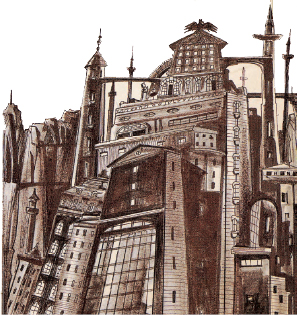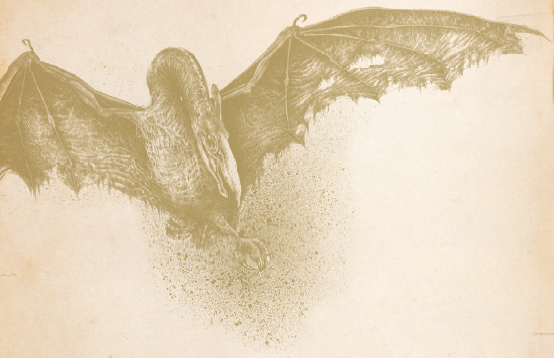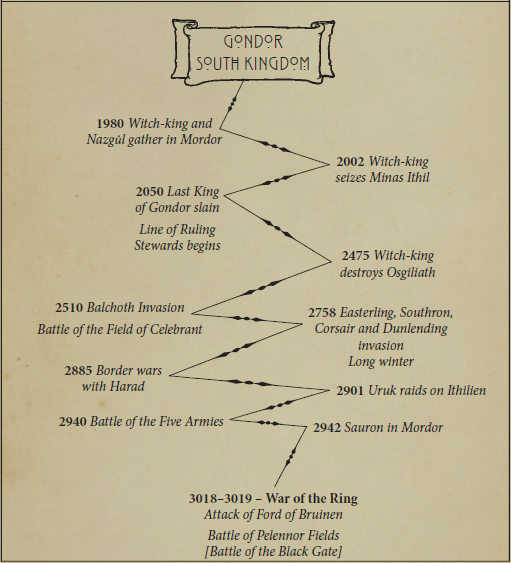THE WITCH-KING OF MINAS MORGUL

In the wake of the Battle of Fornost, after which the Witch-king flees in defeat, Tolkien weaves into his tale a direct allusion to Shakespeare’s riddling prophecy regarding the doomed Scottish warlord Macbeth as one who cannot be slain by the hand of a man “of woman born”. As the Witch-king vanishes from the battleground in the gathering dark, the High Elf lord Glorfindel makes his own riddling prophecy: “Do not pursue him! He will not return to these lands. Far off yet is his doom, and not by the hand of man will he fall.”
The phantom horseman’s doom indeed proves to be a distant one. For just five years after the Battle of Fornost, the Witch-king reappears in all his evil glory in the Black Land of Mordor. There, he is joined by the other Ringwraiths and, over the next seven decades, the Nine launch massive attacks on Gondor that result in the capture of its eastern fortress of Minas Ithil and the death of Gondor’s last king, Eärnur. Minas Ithil becomes Minas Morgul, the “Tower of Black Sorcery”, and, over the next millennium, as the prophecy has foretold, the Witchking of Minas Morgul withstands every Man who stands against him on the field of battle. While the Necromancer resides in Dol Guldur, the Witch-king and the Nazgûl are masters of the vast legions of Orcs and allies of Mordor.

Minas Morgul

Hell-hawk of the Nazgûl
In TA 3018, Sauron provides the Black Riders with fearsome new steeds, challenging the domain of the Great Eagles of the North. These are the nameless Winged Beasts that are variously described by Tolkien as Fell Beasts, Hell-hawks and Nazgûl-birds: they are “greater than all other birds … neither quill nor feather did it bear, and its vast pinions were as webs of hide between horned fingers … A creature of an older world maybe it was.”
When asked about the origin of these winged steeds, Tolkien replied that he had not intended them to be “pterodactylic”, but acknowledged that they resembled “pterosaurs” and might have been survivors of an older geological age. It is curious that Tolkien used that specific word “pterosaurs”. It was a word that came into the English language only in 1863 with archeological discoveries of the time. It comes from the Greek for “winged lizard”. There is a curious connection here with Tolkien’s name for his Dark Lord. “Sauron” may mean “Abominable” in his invented Elvish, but in English it suggests the Greek saurus, meaning “lizard”. In his choice of Sauron as the name of his Dark Lord, Tolkien was aware of the sense of menace conveyed in that name.
It seems likely, then, that the name of the Dark Lord may have worked on Tolkien’s imagination when it came to supplying the Ringwraiths with their flying nightmarish steeds. Strangely enough, at the time of Tolkien’s creation of these monsters, there was no evidence of any pterosaurs anywhere near the size of the Nazgûl-birds. However, just in Tolkien’s last year of life, an archeologist discovered what was named the Quetzalcoatlus: a pterosaur standing 3 metres (10 feet) tall with an astonishing wingspan of 12 metres (40 feet). This seems a perfect match for the dimensions of Tolkien’s Hell-hawks!

